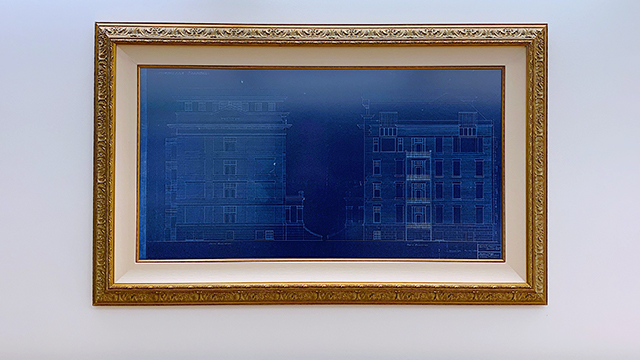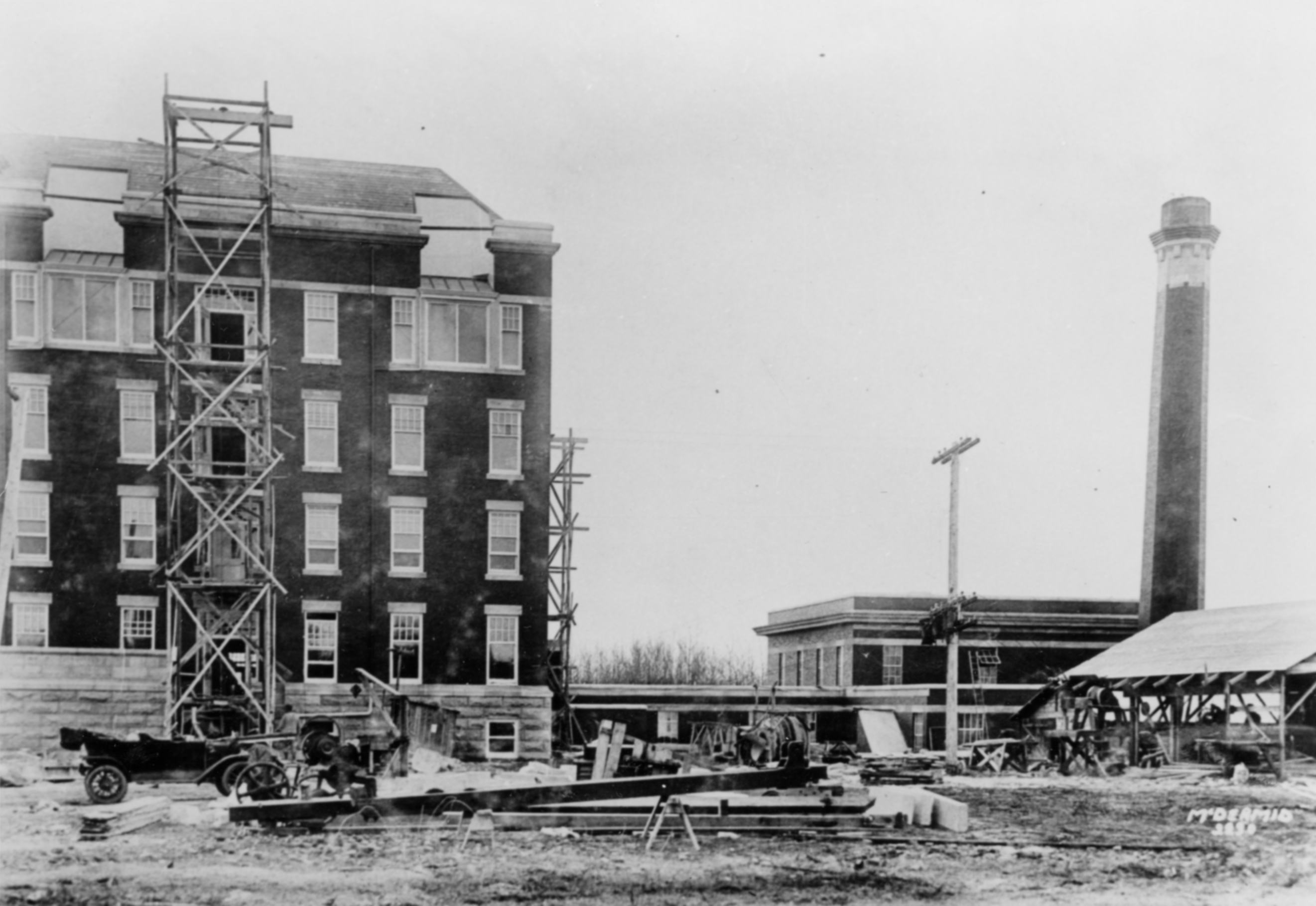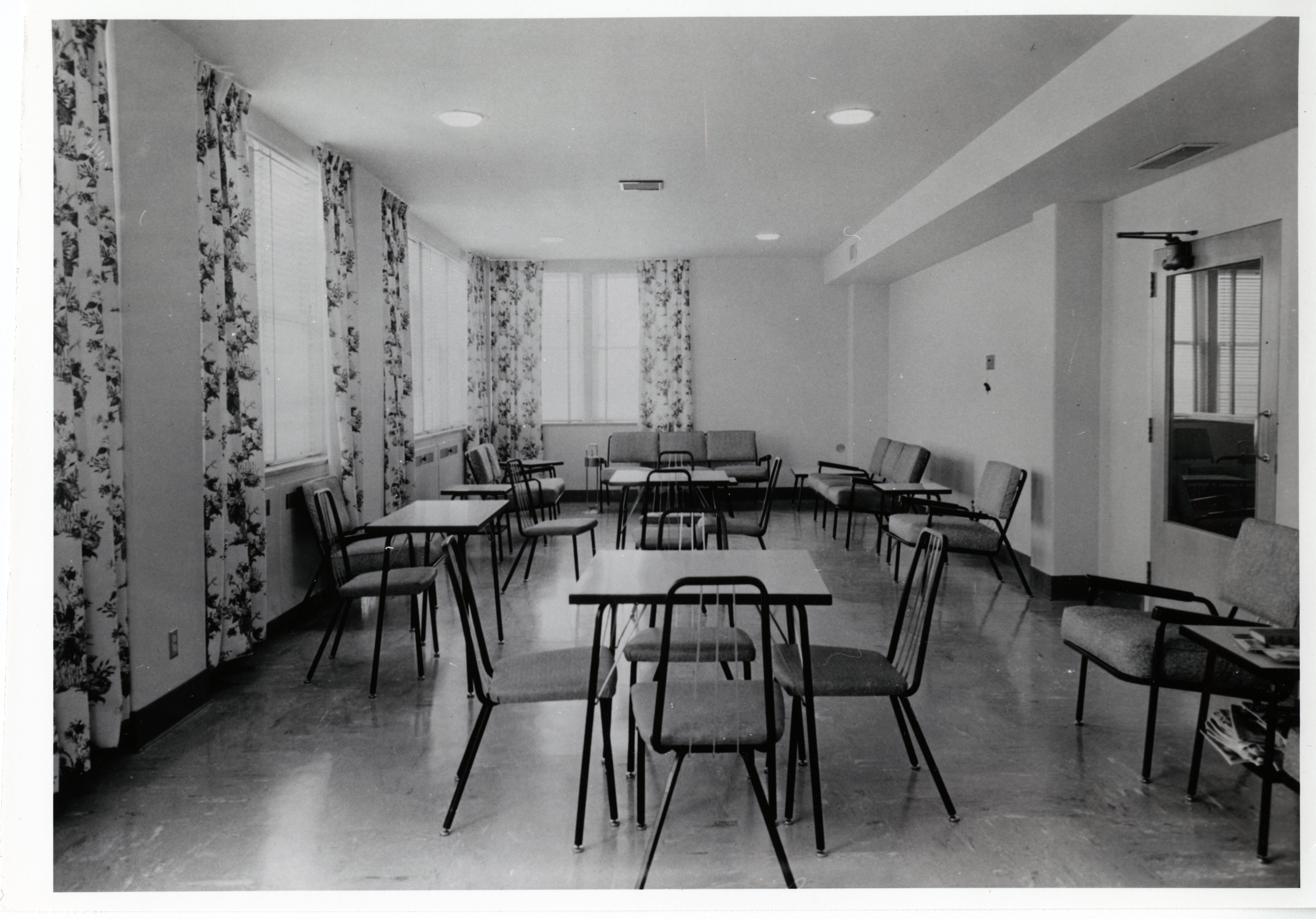
Reproductions of the blueprints are displayed on the second floor of the Walter C. Mackenzie Health Sciences Centre, outside the Dean's Office.
On a summer day in 2016, Richard Fedorak, late dean of the University of Alberta's Faculty of Medicine & Dentistry, returned to his office from lunch to find a large copper box on his desk. Inside were bundles of aged papers and some coins. This was the missing time capsule from the cornerstone of the university's first hospital, the Strathcona Hospital. Inside were the original blueprints for the hospital and newspapers from June 25, 1913-the day the cornerstone was laid. The cornerstone, with the time capsule inside had been removed from the building when it was demolished in 1983 to make space for the current Clinical Services Wing.
"No one seems to know how the box arrived on Dean Fedorak's desk," said Amy Samson, former historian of the Faculty of Medicine & Dentistry.
A piece of Edmonton's history
The early story of the University Hospital is also very much the story of Edmonton's early days, even before all of it was called Edmonton. In 1906, A.C. Rutherford, the Premier of the province, the MLA for the City of Strathcona and the earliest proponent of the University of Alberta brought the idea of a civic hospital to the Strathcona city council. The council knew the proposal could mean only one thing; the institution would also serve the university that Rutherford was working so hard to found in their small but feisty city.
From 1906 to 1914, the hospital, called at the time the Strathcona Cottage Hospital, was operated by a Hospital Committee of the Strathcona City Council and ran out of a house, located on 78th Avenue between 104th and 105th street, with 15 beds under the direction of a hospital Matron. While the Committee and the city of Strathcona worked to provide hospital services in the house, they also worked to secure a larger, grander structure for the endeavour. During this time Henry Marshall Tory entered the scene with a mandate to found a provincial university in the city of Strathcona.
In January 1908, Tory approached the Hospital Committee with his vision for a medical school at the university, should the good people of Strathcona choose the university as the site of their hospital. Although it was some years before building began, in 1909, under Rutherford's and Tory's stewardship, the university leased to Strathcona all the property between 84th and 87th Avenues and 112th and 114th streets as a hospital site. One year after the university's founding, the fate of the university's Faculty of Medicine was harnessed to Strathcona's and Alberta's health-care systems.
 On June 25, 1913, Edmonton's Mayor William Short laid the cornerstone of the new building, with the very time capsule that would appear on Dean Fedorak's desk 103 years later. On January 24, 1914, Mayor William J. McNamara officially opened the new building. With capacity for 150 beds, the five-story structure was the tallest building on the south side of the river. Tory, the University of Alberta's first president, spoke during the opening ceremony about the importance of teaching hospitals to society.
On June 25, 1913, Edmonton's Mayor William Short laid the cornerstone of the new building, with the very time capsule that would appear on Dean Fedorak's desk 103 years later. On January 24, 1914, Mayor William J. McNamara officially opened the new building. With capacity for 150 beds, the five-story structure was the tallest building on the south side of the river. Tory, the University of Alberta's first president, spoke during the opening ceremony about the importance of teaching hospitals to society.
Medical education at the University of Alberta began in the fall of 1914, with 26 students. As the first classes coincided with the first battles of World War One, students and faculty were soon off to battle. From 1916 to 1922 the federal government operated the hospital as the Strathcona Military Hospital. When the federal government returned its operation to the University of Alberta in 1922, the hospital was renamed the University Hospital. The Faculty of Medicine graduated its first students in 1925.
Over the course of its lifetime the building grew, changed and shrank until it was torn down completely in 1983. It is believed that the time capsule was misplaced some time in the early 1950s, a period when many wings were added and additions made to the original structure.
Memories of learning and collegiality
Although the building is gone, current faculty members and professors emeriti remember their time working in the Strathcona Hospital.
"You would walk in and right away on your left was a doctors' lounge. You had to pass through there to hang up your coat and pick up your mail, and of course to get your coffee," said Lorne Tyrrell, alumnus, professor of medical microbiology & immunology, and former dean of the Faculty of Medicine & Dentistry, who was both intern and resident in the original building in the late 1960s and early 1970s.

Doctors' Lounge
The doctors' lounge was not only a convenience. For the doctors who worked there, it was the heart of the building, a place to meet and to discuss their work and their patients.
Anne Fanning-Binder, professor emerita of infectious diseases, remembers her internships and residencies, also through the late 1960s and early 1970s in the original University Hospital with fondness.
"There was a lovely collegial feeling in the building," she recalled. "Because you came in and immediately you encountered all your colleagues. There were some real raconteurs. I have vivid recollections of people sitting around and smoking while they discussed medicine!"
"There was a social aspect that was quite important. All the specialties met in that doctors' room, so you knew everyone. It was good for camaraderie and intellectual development," said Tyrrell. "We would do what we called 'hallway consults.' You could simply ask your colleagues, 'What do you think?' It made for a nice atmosphere."
From its earliest days the hospital cared for Canada's veterans and Tyrrell recalls that a theatre that was used to screen movies for vets was sometimes the best place for lectures as well.
"Several times," Tyrrell recalled with a laugh, "vets and their movies had priority over our lectures and we were moved out."
Fanning and Tyrrell both also interned at the old Strathcona Hospital and say that, just as Tory had hoped, the hospital was an important part of their education.
"There were a lot of very good people teaching and it was a great place to get our training. When we completed our training we felt we were ready to take on the world," said Tyrrell.
"Our areas of interest were not so specialized as they are now and the doctors' lounge ensured that we saw each other and learned from each other," said George Goldsand, professor emeritus of infectious diseases and founding director of the division.
"We have these fantastic new facilities, but research is so specialized that people can work in the same hospital without ever meeting," he mused. "Something gets lost."
Dean Fedorak was well-known as a history of medicine enthusiast. When he found the time capsule on his desk, he knew the university could not afford to lose its contents again. He arranged to have the blueprints and newspapers restored by the Provincial Archives of Alberta and they are all now housed at the university's new Research Collections Facility at south campus.
Reproductions of the blueprints are displayed now at the University of Alberta Hospital on the second floor of the Walter C. Mackenzie Health Sciences Centre, outside the Dean's Office in the hallway connecting to the Mazankowski Alberta Heart Institute and Clinical Sciences Building.
"We have many patients, families, staff and physicians with an incredible story to tell who feel connected to the old University Hospital," said Cathy Osborne, Senior Operating Officer, University of Alberta Hospital (UAH), Mazankowski Alberta Heart Institute and Kaye Edmonton Clinic. "The building may be gone, but people remain connected to the history and evolution of care provided across the footprint of the UAH campus."
Thank you to the Faculty of Medicine & Dentistry's close partners at Alberta Health Services and the University of Alberta Hospital, the University Hospital Foundation, the McMullen Gallery and Friends of University Hospitals for their support in making the blueprint display possible.